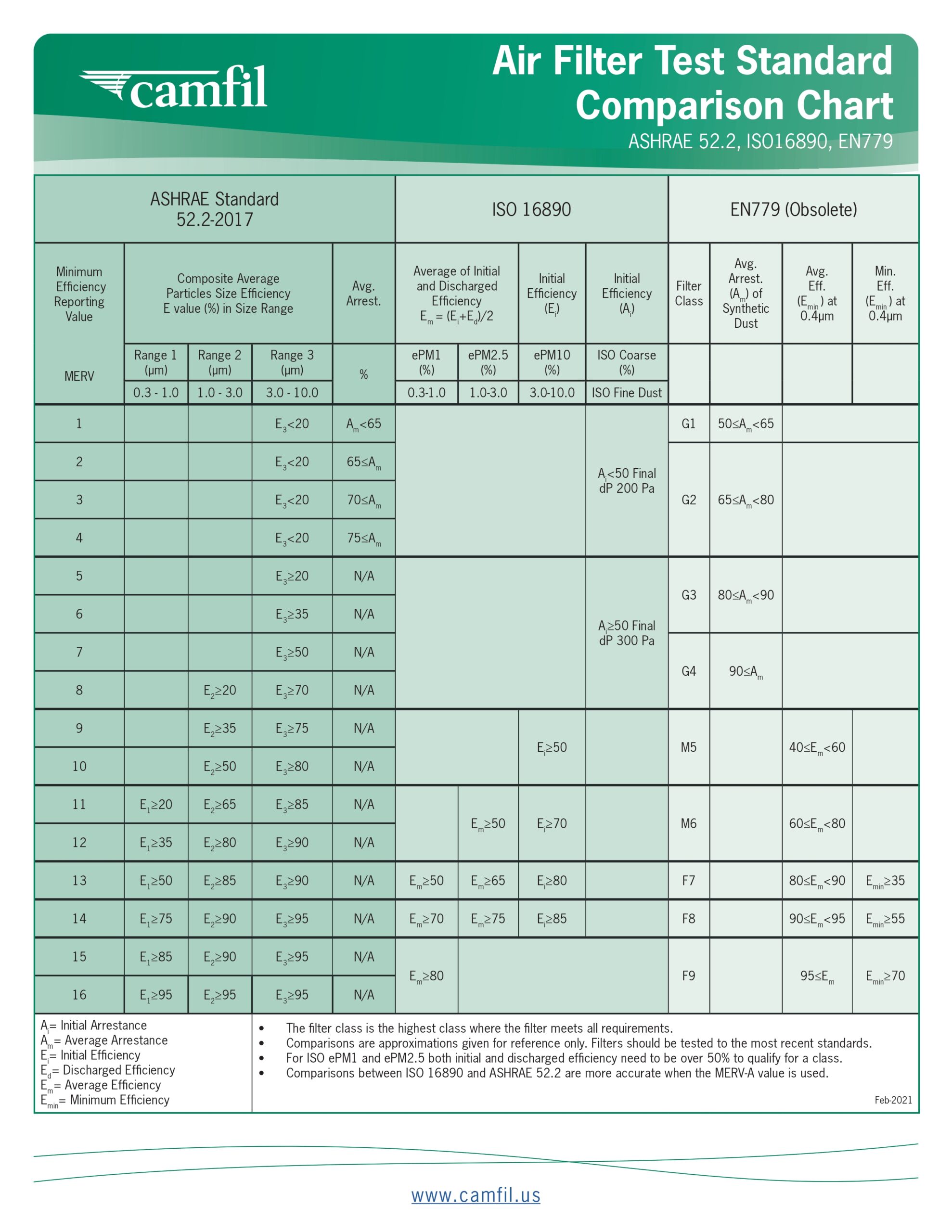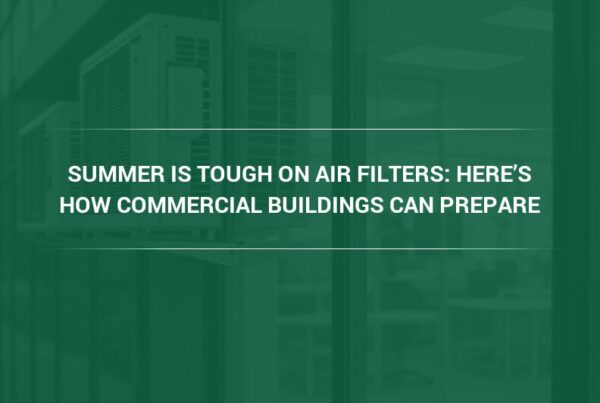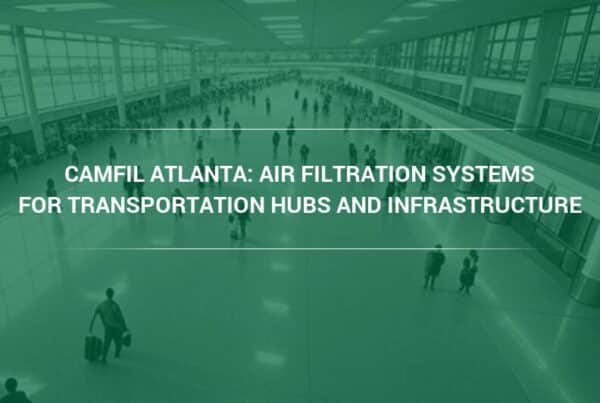Ensuring high indoor air quality in commercial and public spaces is crucial for the well-being, health, and comfort of occupants and visitors. According to the Environmental Protection Agency, Americans typically spend around 90% of their time indoors, including prolonged periods at work.
The EPA notes that indoor air can often contain more pollutants than outdoor air. Consequently, subpar indoor air quality can lead to significant health issues. The resulting loss in productivity and increased sick days can lead to national revenue losses amounting to tens of billions of dollars each year.
What causes poor indoor air quality?
Indoor air quality can be diminished by a range of pollutants and chemicals originating from both outside and inside the building. Building occupants may be exposed to these harmful elements for long and frequent durations. The EPA cites the following:
- Biological contaminants like bacteria, viruses, pollen, mold, dust mites, and water spills can enter enclosed spaces, triggering allergic reactions, shortness of breath, dizziness, and infectious illnesses such as influenza.
- Chemical pollutants from sources like tobacco smoke, cleaning products, gases expelled by building materials and furnishings can irritate the nose, throat, lungs, and cause headaches.
- Suspended air particles and pathogens can remain suspended in the air or travel on air currents until they settle on surfaces or individuals. These contaminants are more likely to spread among people in indoor environments due to higher concentrations, raising the risk of diseases such as influenza.
The Role of Air Handling Units in Building Environments
Today’s modern buildings feature complex designs with diverse spaces dedicated to different functions, making it challenging to ensure proper ventilation and air quality throughout. HVAC systems are the first line of defense in removing and diluting airborne pollutants.
Central to the systems are air handling units (AHUs), which process and circulate clean air back into the building through a network of ducts. Commonly positioned on rooftops, AHUs draw in outdoor air, filtering contaminants before redistribution. They have a direct impact on indoor air quality and the HVAC system’s lifespan by keeping equipment clean.
Central to the systems are the air handling units (AHU) which contain equipment such as cooling coils or heating elements that condition the air for temperature and humidity. A certain percentage of outdoor air is mixed with the recirculated indoor air to maintain a regular supply of fresh air. Powerful fans then direct the air mixture through filters for contaminant removal and then throughout the building within a network of ducts.
MERV (minimum efficiency reporting values) indicates a filter’s effectiveness at trapping particles between 0.3 to 10 microns in size. This rating, established by ASHRAE Standard 52.2, aids in selecting the appropriate filter for specific filtration need. ISO has introduced a filter standard as well, known as ISO16890. This standard relies on particle sizes classified into PM1, PM2.5, and PM10. The table below is helpful when determining the appropriate filter efficiency required and the relationship between MERV and ISO16890.
During the pandemic, ASHRAE’s Epidemic Task Force recommended using filters with a minimum MERV 13 rating for HVAC systems and many still follow the recommendation today. Filter selection should also consider the specific HVAC system’s capabilities to properly hold the filter in place and move air through the filter. While HEPA filters might seem like a universal solution due to their high filtration levels, HEPAs require specialized holding frames and fans that can overcome the higher resistance to airflow which could render them an impractical choice.
Air Filter Types for AHUs in Commercial Settings
AHUs in commercial buildings are generally larger and more powerful which means they are often capable of holding a wide variety of air filter styles. Here are various filters with the respective MERV ratings:
- HEPA or high-efficiency particulate air filters have very high efficiency, capturing a minimum of 99.97% of particles as small as 0.3-microns which include respiratory aerosols that could contain harmful viruses. The particles are much smaller than the eye can see.
- V-bank style mini-pleats are the high-performance air filters on the market today for general ventilation. They have a very low resistance to airflow and coupled with the high dirt-holding capacity, can remain in service for long periods. In some applications, V-bank-style filters can remain operating in AHUs for up to three years.
- Bag filters are prevalent in commercial and public structure HVAC systems for both primary and secondary filtering stages. Bag filters can be standalone for general air quality or act as pre-filters for specialized environments. The filters are also installed in the exhaust air or recirculation systems to protect air handling units. With MERV ratings from 11 – 15, bag filters offer higher dust-holding capacity and longer lifetimes than most other filters.
- Pleated panel filters are used as the primary filter in AHUs with limited space for air filters. In AHUs with multiple filtration stages, panel filters are used as prefilters to keep the heating and cooling coils clean and to protect and extend the life of more expensive final filters by capturing larger particles in ventilation intake or recirculation air. The filters have a MERV rating of 8 to 13.
- Molecular filters are designed to eliminate gases, vapors, and molecular-scale pollutants. These substances are up to 1,000 times smaller than the particles that HEPA filters can capture. Molecular filters often use activated carbon or alumina to trap these tiny molecules using the adsorption filtration principle.
Air Filtration Solutions for Different Facilities
No single filter type is universally ideal for all commercial and public buildings. For instance, the filters needed in airports differ from those required in restaurants due to the various sizes and types of airborne particles that must be removed. The filter choice also hinges on several factors, including the capacity of the existing AHUs, the building’s function, cost considerations, desired efficiency levels, air quality objectives, and compatibility with the existing HVAC system. The overarching objective is to improve indoor air quality.
Below is a snapshot of the requirements and types of filters used in different spaces.
Airports
 Every day, millions of passengers pass through airport terminals, inadvertently shedding particles from their luggage, skin, and clothing that pollute the air. This is compounded by diesel fumes from passenger buses and baggage wagons, and the vapors from cleaning chemicals used within the terminal.
Every day, millions of passengers pass through airport terminals, inadvertently shedding particles from their luggage, skin, and clothing that pollute the air. This is compounded by diesel fumes from passenger buses and baggage wagons, and the vapors from cleaning chemicals used within the terminal.
Airports combat these hazards by circulating a combination of outdoor and recirculated filtered indoor air, throughout the terminals, thus protecting travelers and staff from dangerous substances. Typically, the central station HVAC systems or rooftop AHUs are equipped with air filters rated MERV 13 to 16, providing the greatest level of protection against fine particle contaminants while maintaining economic operation.
Camfil, a leading manufacturer of premium clean air solutions, recommends these filters to strike an ideal balance between operational efficiency, long service life, and energy conservation. Additionally, carbon air filtration systems are employed to absorb diesel exhaust and odors from airport vehicles.
Retail Space
 Maintaining fresh air in the confined spaces of shopping malls and retail stores is essential for a pleasant and safe shopping environment. Research indicates that indoor air quality in malls can be up to 10x times worse than air outdoors. A variety of factors contribute to this: particles shed from customers’ skin and clothing, carbon dioxide from the breath of shoppers and staff, dust from restocking activities, intense cleaning processes, and emissions from transport vehicles all play a part in degrading air quality.
Maintaining fresh air in the confined spaces of shopping malls and retail stores is essential for a pleasant and safe shopping environment. Research indicates that indoor air quality in malls can be up to 10x times worse than air outdoors. A variety of factors contribute to this: particles shed from customers’ skin and clothing, carbon dioxide from the breath of shoppers and staff, dust from restocking activities, intense cleaning processes, and emissions from transport vehicles all play a part in degrading air quality.
Short-term exposure to these elements can cause headaches and irritate the eyes and respiratory system. Airborne viruses shared by sick individuals can increase the risk of illness. Choosing an air filter depends on space, number of visitors, and type of airborne contaminants. While there are no standards to follow, the Occupational Safety and Health Administration and ASHRAE recommends using filters with a minimum MERV rating of 13 to minimize the potential spread of viruses such as COVID-19.
Hotels
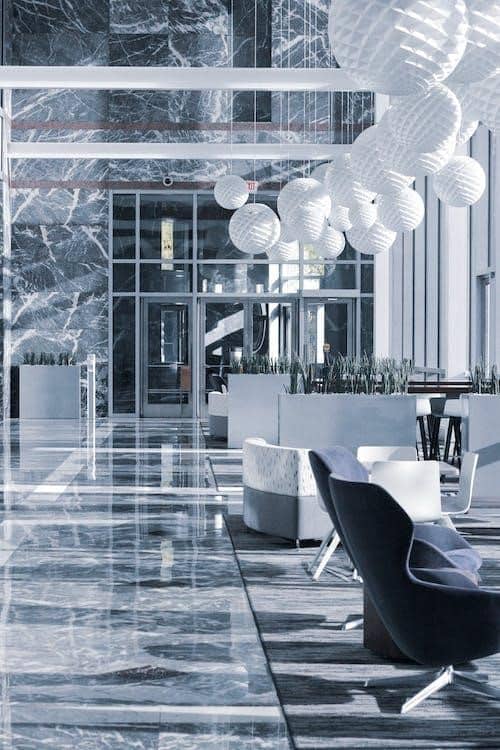 Hotel guests expect easy check-ins, clean rooms, and fresh air. In the hospitality industry, clean indoor air, along with climate control, ranks high on guests’ requests. Hotels face the challenge of filteringexternal pollution that seeps indoors, neutralizing cleaning agent odors, kitchen smoke, renovation dust, ductwork mold and bacteria, and carpet emissions. Different hotel zones like kitchens, lobbies, bars, and rooms each have unique air quality needs.
Hotel guests expect easy check-ins, clean rooms, and fresh air. In the hospitality industry, clean indoor air, along with climate control, ranks high on guests’ requests. Hotels face the challenge of filteringexternal pollution that seeps indoors, neutralizing cleaning agent odors, kitchen smoke, renovation dust, ductwork mold and bacteria, and carpet emissions. Different hotel zones like kitchens, lobbies, bars, and rooms each have unique air quality needs.
Energy-efficient filters with varying MERV ratings can effectively trap and remove a multitude of contaminants, from dust and bacteria to gases and volatile organic compounds (VOCs), to maintain high indoor air quality. These filters also contribute to energy savings and a lower carbon footprint.
Ensuring clean air is key to providing comfort and safeguarding the health of visitors, which in turn fosters guest loyalty and creates a wholesome environment for both work and leisure. While MERV 8-12 filters are commonly used for commercial buildings, higher MERV-rated filters such as 13-16, control finer particles such as bacteria, tobacco smoke, and some droplets from sneezes and coughs. The use of energy-efficient filters to improve indoor air quality can help save on energy costs that represent 15 – 20% of the total cost of hotel operations.
Offices
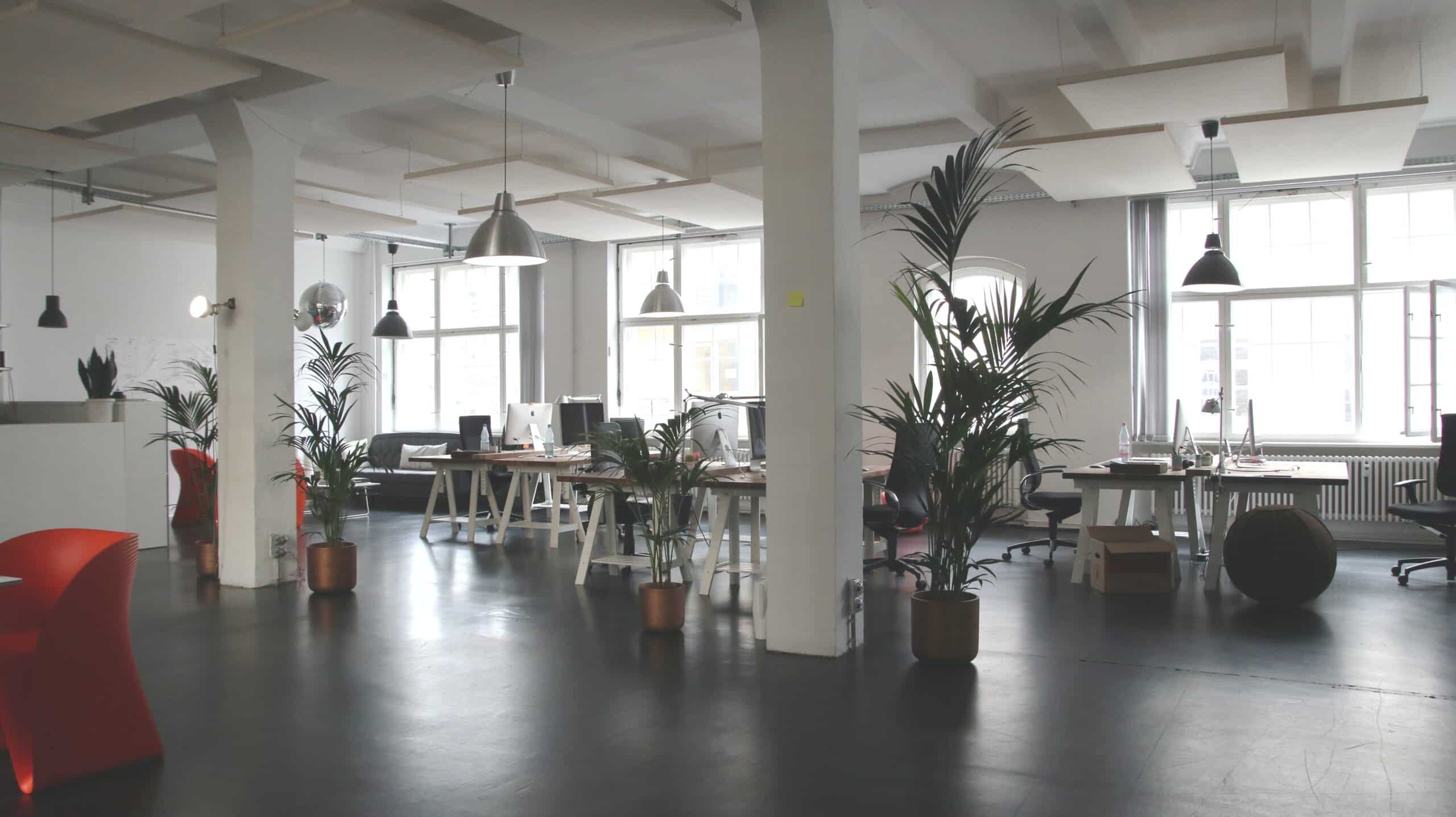 Many offices have poor air circulation with outdated ventilation systems that just move unclean air from one part of the office to another. The wrong filters won’t offer the right results in removing small particles and odors in the air. Studies indicate that good indoor air quality positively affects worker productivity.
Many offices have poor air circulation with outdated ventilation systems that just move unclean air from one part of the office to another. The wrong filters won’t offer the right results in removing small particles and odors in the air. Studies indicate that good indoor air quality positively affects worker productivity.
In addition to upgrading HVAC systems, office buildings should place the right filters throughout their space to purify air for occupants and increase the efficiency of HVAC systems. Filters with a MERV rating between 8 and 16 are recommended for the HVAC systems. However, the higher the rating, the more contaminants a filter will block to protect equipment, operations, and building occupants.
Restaurants
 Dining out is as much about the ambiance as it is about the food and service. Customers expect delicious meals, top-notch service, and a dining environment that’s comfortable and clean. Ensuring high-quality indoor air contributes to this experience by eliminating odors that can interfere with the enjoyment of the food and by safeguarding the health of both patrons and staff.
Dining out is as much about the ambiance as it is about the food and service. Customers expect delicious meals, top-notch service, and a dining environment that’s comfortable and clean. Ensuring high-quality indoor air contributes to this experience by eliminating odors that can interfere with the enjoyment of the food and by safeguarding the health of both patrons and staff.
Managing the various spaces within a restaurant comes with distinct air quality challenges. Kitchens require robust ventilation to expel smoke, steam, and heat, while dining areas need to maintain an odor-free and comfortable environment. The solution is a proper combination of air filtration that removes oil and grease, collects particles, and eliminates gases responsible for odor.
As outdoor air is brought in to replace the air extracted from kitchens and dining areas, it must be filtered to achieve high levels of indoor air quality. Fine airborne particles are particularly concerning and need to be efficiently captured with a minimum of MERV 13 to 16 rated air filters, ensuring an environment that meets the expectations for clean air in a dining setting.
Maintaining Filter Efficiency
After installing the appropriate air filters, it’s crucial to properly maintain them to ensure optimal performance and extend the life of the filters and the HVAC system. Buildings should have strict protocols for routine maintenance, checks, and filter replacements. Ideally, air filters should be replaced when the resistance to airflow, aka pressure drop, increases to the point where clean airflow into the space is so restricted, proper conditions within the space are not being maintained. Air filters should not be automatically replaced such as every one to three months. Changing air filters is an expensive undertaking and should be done when the filter’s usable service life is exhausted.
Likewise, neglecting to replace filters when resistance has built up too high, can cause the filter to collapse in on itself and create serious bypass where no air is being filtered. Regularly monitoring pressure drop readings can be used to determine when filters need changing.
Investing in high-quality air filtration to improve indoor air quality is directly associated with the good health, satisfaction, and productivity of building occupants and visitors and extended equipment life.
A specialist in air filtration, with expertise in servicing commercial and public buildings, can conduct a thorough evaluation and develop a tailored air filtration plan to meet the unique needs of the facility for the most effective results.
³ https://cleanair.camfil.us/2017/12/18/is-the-air-quality-at-the-malls-making-you-sick/
⁴ https://www.osha.gov/sites/default/files/COVID-19-Guidance-Mall-Operators.pdf
⁵ https://www.camfil.com/en-us/industries/commercial-and-public-buildings/hotels
⁶ https://www.camfil.com/en-us/industries/commercial-and-public-buildings/offices
⁷ https://www.camfil.com/en-us/industries/commercial-and-public-buildings/restaurants

